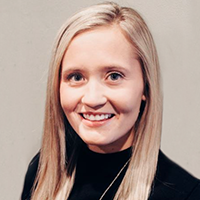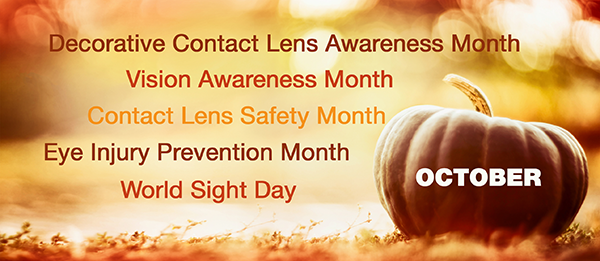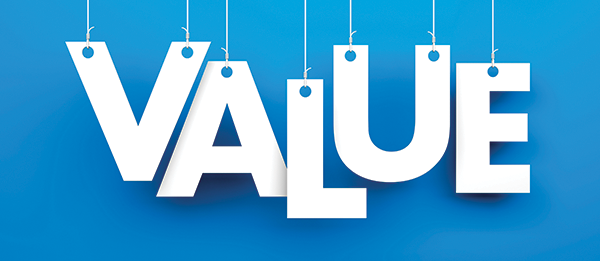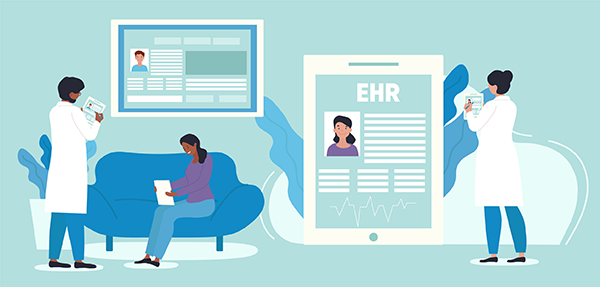|
|
|
|
|
|
Raise Awareness—By Any Name
|
|
|
|
From the SNAPP Board
The American Optometric Association calls October Decorative Contact Lens Awareness Month.
Fighting Blindness calls it Vision Awareness Month.
|
|
|
|
|
Prevent Blindness says it’s Contact Lens Safety Month—or some call it Eye Injury Prevention Month. Then right smack in the middle, we had World Sight Day.
The point is that whatever name you go with or whatever focus you give, there’s a lot of public health attention being paid to eyes, vision and contact lenses this month. How are you leveraging that attention to help spread the message?
Each of these organizations offers social media and other materials that can be used to help promote the message of a lifetime of healthy vision. That’s important because a patient who is interested in decorative contact lenses to complete a Halloween costume is going to look for that information. That patient can turn to you—or turn to the internet at large.
Vision awareness, contact lens knowledge or any other message that brings attention to a lifetime of healthy habits to protect, preserve and enhance vision are all great—for our patients and customers and for our Pearle businesses. So get out there and raise awareness.
|
|
|
The Value of the SNAPP National Meeting |
|
|
|
|
|
There’s a reason your SNAPP Board starts to encourage members to come to the SNAPP National Meeting months before it’s held: you’ll appreciate it for months after. Attendees at the most recent meeting in Las Vegas, Nevada, held in mid-September have returned home and are shaking one great idea after another out of their notebooks. This month, we hear from two of them.
|
|
|
|
|
|
Ben Ribble of Pearle Vision in Jacksonville, Illinois, has attended two SNAPP meetings since opening the practice in 2020. As a Licensed Operator, optician and manager, he sees it as a great time to learn “valuable tips and tricks” from others in his position. “I feel that this is one of the most significant components of SNAPP,” he says.

Ben Ribble
The “top-notch” meetings and information have helped Ribble grow his connections with both OD and non-OD managers; plus, he has learned realistic ways to increase profitability and make his staff and patients happier. Ribble says he took to heart encouragement from a speaker to put these ideas into motion, and he says he is “definitely” doing that. The weeks and months following SNAPP meetings are spent implementing new procedures into place and updating his team—and, in turn, his practice.
“I want to thank the SNAPP board and staff for the planning, preparation and all-around effort that goes into these meetings,” Ribble says.
|
|
|
SNAPP National Meeting Provides a Great Welcome to New Owner |
|
|
|
Chelsea Laden, OD, is a recent graduate of Illinois College of Optometry. She became a Licensed Operator in a Pearle Vision location in Red Wing, Minnesota, just six months ago and wanted to hit the ground running. Networking and education were at the top of her priority list to being a successful practice owner—things she has been able to do with SNAPP.

Dr. Laden
Dr. Laden, who spent some time in the National Women’s Hockey League before going to optometry school, recently attended her first SNAPP National Meeting in Las Vegas, Nevada. “It was nice to meet other owners and employees,” she says. She describes the event as both an educational networking series and a mini-vacation, being from the chilly Midwest. “It was a combination of adventure and fun, networking and learning while accumulating some CE time.”
The various happenings at the SNAPP National Meeting were more than enough to pique Dr. Laden’s interest, but the variety of each discussion made it even more worthwhile. “I appreciated the lecture and CE on nutrition and ocular health,” she says.
Dr. Laden also was able to see some of the latest industry innovations on the show floor and talk one-on-one with vendors to find exactly what fit her needs. “Being able to talk to vendors in person was beneficial,” she says. “We were able to stay on top of updates and changes.”
|
|
|
|
|
|
|
What Is Information Blocking—And What Do I Need to Do? |
|
|
|
From the experts at Practice Compliance Solutions
|
|
|
|
Information blocking is anything that interferes with, prevents or materially discourages access, exchange or use of electronic health information (EHI). The concept was defined by Congress in the 21st Century Cures Act, which, like the Affordable Care Act, was hastily passed and includes many things that have nothing to do with the law’s original intent.
Provisions in the Cures Act dealing with information blocking are aimed at certified electronic health record (EHR) developers, health information exchanges and networks and providers. Most of the burden for compliance falls on the EHR developers, but every health care provider is bound by the requirements of the Cures Act regarding releasing all health care information to patients upon their request. So even though EHR vendors are supposed to make the information accessible easily and automatically (like the Cures Act wants), it is ultimately the provider’s responsibility to get any information the patient wants to the patient. For that reason, providers need to be aware of what constitutes information blocking and the exceptions that are allowed.
Section 4004 of the Cures Act specifies certain practices that could constitute information blocking. Read the full story here to make sure your practice isn’t restricting authorized access, charging excessive fees or restricting the use of a capability that enables users with other systems to share EHI, for example.
The Cures Act does authorize as reasonable and necessary some activities that do not constitute information blocking (provided certain conditions are met). These include reasonable and necessary practices to prevent harm to a patient, to protect an individual’s privacy or the security of EHI, to charge reasonable fees and more.
If many of these practices and exceptions seem very technical, it is because most of them are aimed at EHR developers. However, optometrists should understand the basics of information blocking and do their best to provide EHI to their patients when requested.
|
|
|
|
|
8 Reasons Why You Need A Policy Manual |
|
|
|
From the HR Pros at AmCheck
|
|
|
|
|
|
|
|
|
CDC Says No Masks Required in Health Care Settings |
|
|
|
In late September, the Centers for Disease Control and Prevention (CDC) changed its position on mandatory masking in health care settings, no longer recommending that it be universal.
|
|
|
|
|
“Updates were made to reflect the high levels of vaccine- and infection-induced immunity and the availability of effective treatments and prevention tools,” the CDC’s new guidance says. Read it here.
|
|
|
Other Diseases Predictors of Early Glaucoma |
|
|
|
The earlier individuals develop Type 2 diabetes or hypertension in life, the earlier they are likely to develop primary open-angle glaucoma (POAG), the leading cause of irreversible blindness worldwide, researchers report.
|
|
|
|
|
The findings, published in Clinical Ophthalmology, could lead to better screening protocols and earlier intervention for POAG, which accounts for up to 90 percent of all cases of glaucoma. Read more here.
|
|
|
Can the Adult Brain Recover Vision? |
|
|
|
Researchers in the University of California, Irvine (UCI) School of Biological Sciences and the School of Medicine knew that administering chemical compounds that target the retina, called synthetic retinoids, can restore a notable amount of vision in children with Leber congenital amaurosis or LCA.
|
|
|
|
|
The UCI team wanted to find out if the treatment could make a difference for adults who have the condition. Working with rodent models of LCA, the collaborators were surprised by what they found. “The central visual pathway signaling was significantly restored in adults, especially the circuits that deal with information coming from both eyes,” said Sunil Gandhi, professor of neurobiology and behavior and the corresponding author. Read more here.
|
|
|
Vision Impairment and Food Insecurity |
|
|
|
Researchers examined the association between self-reported visual impairment (VI) and food insecurity status among low-income U.S. adults between 2011 and 2018. The results, printed in September 2022 in Ophthalmic Epidemiology, support the notion that VI is associated with food insecurity.
|
|
|
|
|
These findings highlight the importance of better connecting individuals with vision disability to food assistance programs and close food inequity gaps for this population. Read the study here.
|
|
|
|
Getty Images photo credits—brain: PASIEKA; EHR info: Rudzhan_Nagiev; eye: PeopleImages; food eye: David_Malan; and October: VICUSCHKA
|
|
|
|
|
|
|





